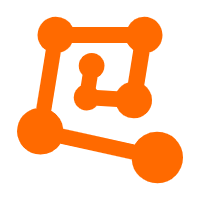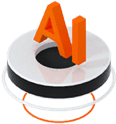Large Language Models (LLMs) have become a trend in the world of AI after Generative AI, fascinating researchers, developers, students, and the public alike. These powerful models, trained on massive datasets, are capable to understanding and generating human-like text while some of them are capable to coding, reasoning, and detecting objects, opening up a world of possibilities. But what exactly are Large Language Models (LLMs), and how do they work? This blog post delves into the intricacies of LLMs, exploring their architecture, capabilities, and potential impact to solve real-world problems.
Follow me to stay updated with the Artificial Intelligence fields blog
At the core of LLMs located the transformer architecture a revolutionary design that has transformed the field of Natural Language Processing (NLP). Unlike the traditional sequential models like Recurrent Neural Network (RNN), transformers process entire sequences of text in parallel, triggering faster training and improved performance on long-range dependencies. Transformers work by processing huge volumes of data, and encoding language tokens (representing individual words or phrases) as vector-based embeddings (arrays of numeric values).
The key innovation in the transformer is the attention mechanism, which allows the model to focus on different parts of the input sequence when generating output. This mechanism enables LLMs to capture complex relationships between words and phrases, leading to a deeper understanding of language.
These capabilities have led to a surge in LLMs applications across various domains:
Despite their impressive capabilities, LLMs are not without limitations:
The field of LLMs is rapidly evolving, with ongoing research pushing the boundaries of their capabilities. Key areas of focus include:
LLMs have too many potential to revolutionize how we leveraging & interact with technology advancements. As research progresses and challenges are addressed, LLMs are ready to become an important part of our daily lives, shaping the future of humanity, creativity, and problem-solving.
Access my previous blog:
Coding Smarter, Not Harder | The True Capability of Qwen 2.5 Coder 32B Instruct
Alibaba Cloud Indonesia - July 16, 2025
Farruh - March 22, 2024
Alibaba Cloud Community - September 10, 2025
Alibaba Cloud Indonesia - April 14, 2025
Farah Abdou - December 1, 2025
Farruh - December 5, 2025
 Platform For AI
Platform For AI
A platform that provides enterprise-level data modeling services based on machine learning algorithms to quickly meet your needs for data-driven operations.
Learn More Epidemic Prediction Solution
Epidemic Prediction Solution
This technology can be used to predict the spread of COVID-19 and help decision makers evaluate the impact of various prevention and control measures on the development of the epidemic.
Learn More AI Acceleration Solution
AI Acceleration Solution
Accelerate AI-driven business and AI model training and inference with Alibaba Cloud GPU technology
Learn More Offline Visual Intelligence Software Packages
Offline Visual Intelligence Software Packages
Offline SDKs for visual production, such as image segmentation, video segmentation, and character recognition, based on deep learning technologies developed by Alibaba Cloud.
Learn MoreMore Posts by Ced